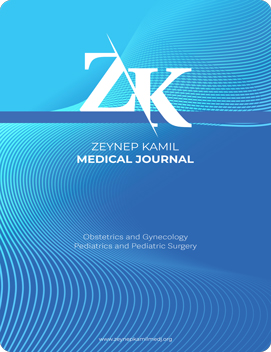Quick Search
Comparison of maternal and perinatal outcomes between early-and late-onset preeclampsia
Özlem Aldemir Bukağıkıran1, Savaş Kanbur21Department of Perinatology, University of Health Sciences, Turkey. Istanbul Zeynep Kamil Maternity and Childrens Diseases Health Training and Research Center, Istanbul, Turkey2Department of Obstetrics and Gynecology, University of Health Sciences, Turkey. Istanbul Zeynep Kamil Maternity and Childrens Diseases Health Training and Research Center, Istanbul, Turkey
INTRODUCTION: Preeclampsia is a major cause of maternal and fetal-neonatal morbidity and mortality worldwide. The timing of onsetwhether early (<34 weeks) or late (≥34 weeks)may influence both maternal and perinatal outcomes. This retrospective study aimed to compare the clinical and perinatal outcomes of early- versus late-onset preeclampsia in singleton pregnancies.
METHODS: Medical records of 193 women with singleton pregnancies complicated by preeclampsia were retrospectively analyzed at a tertiary referral center between January 2013 and January 2014. Patients were categorized into early-onset (2434 weeks) and late-onset (≥34 weeks) groups. Maternal demographic and clinical characteristics, laboratory parameters, obstetric complications, and neonatal outcomes (birth weight, Apgar scores, NICU admission, cord blood pH) were compared.
RESULTS: Early-onset preeclampsia was associated with significantly higher AST, ALT, LDH, proteinuria, hypoalbuminemia, hypoproteinemia, magnesium sulfate therapy, cesarean delivery, oligohydramnios, fetal growth restriction, maternal complications, and NICU admissions. Compared with neonates in the late-onset preeclampsia group, those born to mothers with early-onset disease had significantly lower birth weights, reduced Apgar scores at 1 and 5 minutes, and more acidotic cord blood gases.
DISCUSSION AND CONCLUSION: Early-onset preeclampsia represents a more severe form of the disease, characterized by higher maternal morbidity and adverse neonatal outcomes. The 34-week threshold appears to be a critical determinant of prognosis, with longer gestation positively influencing neonatal survival and health. Early detection, close monitoring, and timely delivery remain key strategies for improving maternal and perinatal outcomes.
Keywords: Early-onset preeclampsia, late-onset preeclampsia, preeclampsia.
Manuscript Language: English
















